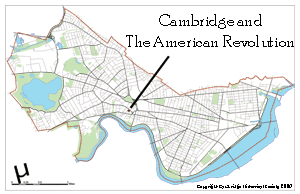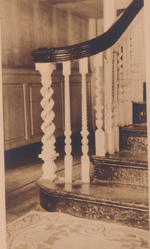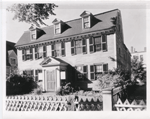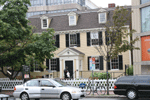William Brattle House
The Brattle House is now the Cambridge Center for Adult Education, but in the pre-Revolutionary era it was the home of William Brattle Jr.. At the time of his death, General-Major Brattle was one of the wealthiest men in the Massachusetts Bay Colony. He was a decorated military figure who fought in the French and Indian War or the Seven Years’ War. Like many of his fellow loyalists, Brattle attended Harvard College. In 1727, several years after completing his degree, he had this mansion built.
He was the son of William Brattle and the nephew of Thomas Brattle, who founded Brattle Street Church in Boston, a prominent Congregational then Unitarian house of worship whose members included the Hancocks and the Adamses among other leading Boston families. Although in the 1770s, William Brattle was called a “fence-straddler” for simultaneously appeasing patriots while supporting the British. The Powder Alarm of 1774 revealed where his true allegiance lay.
Brattle was instrumental in the Powder Alarm. In the autumn of 1774, convinced that Cantabrigians were plotting to steal the remaining colony-owned powder from the Charlestown Powder house (which still stands in modern day Somerville), William Brattle informed Thomas Gage, the Commander In Chief and Royal Governor of Massachusetts Bay, of his apprehension about the gunpowder and the build-up of local militias. Brattle’s letter to Gage was lost and later found by a patriot who subsequently published it in a popular Boston newspaper.
Instead of quietly investigating the powderhouse inventory, Gage gathered 300 troops and sailed to Charlestown on a “secret” mission with the objective of seizing the remaining barrels. Removing the powder was fully within his jurisdiction as the governor of the colony, however, he misjudged the provincials’ reaction. The colonists perceived this operation as a provocative measure, and as an unwarranted exhibition of royal power.
By the following morning, approximately 4,000 people gathered on Cambridge Common. Patriot leaders utilized the power of the assembled crowd to protest their grievances. They then demanded the resignation of Lieutenant Governor Thomas Oliver, as well as Judges Samuel Danforth and Joseph Lee who were all members of the Mandamus Council. Oliver presumed that Governor Gage would send troops to suppress the mob, and feared the potential violent confrontation. In an effort to prevent an armed conflict, he traveled to Boston to speak with General Gage. In due course, Oliver returned to Cambridge, with assurances that Gage would not send troops. However, a despised tax collector, Benjamin Hallowell, rode past the crowd and within a few minutes men on horseback were in full pursuit.
Although the incidents of the day did not spark the revolution, the Tories of Cambridge felt unsafe and moved to Boston and later many went on to Canada or England as the conflict intensified.
After the Battle of Lexington and Concord, the abandoned Tory properties were occupied by patriots. During the Siege of Boston, the Brattle mansion was the headquarters of the Commissary General, Thomas Mifflin, who was often visited by John and Abigail Adams, as well as General George Washington.
Brattle House Today
 |
Back to Interactive Map |




